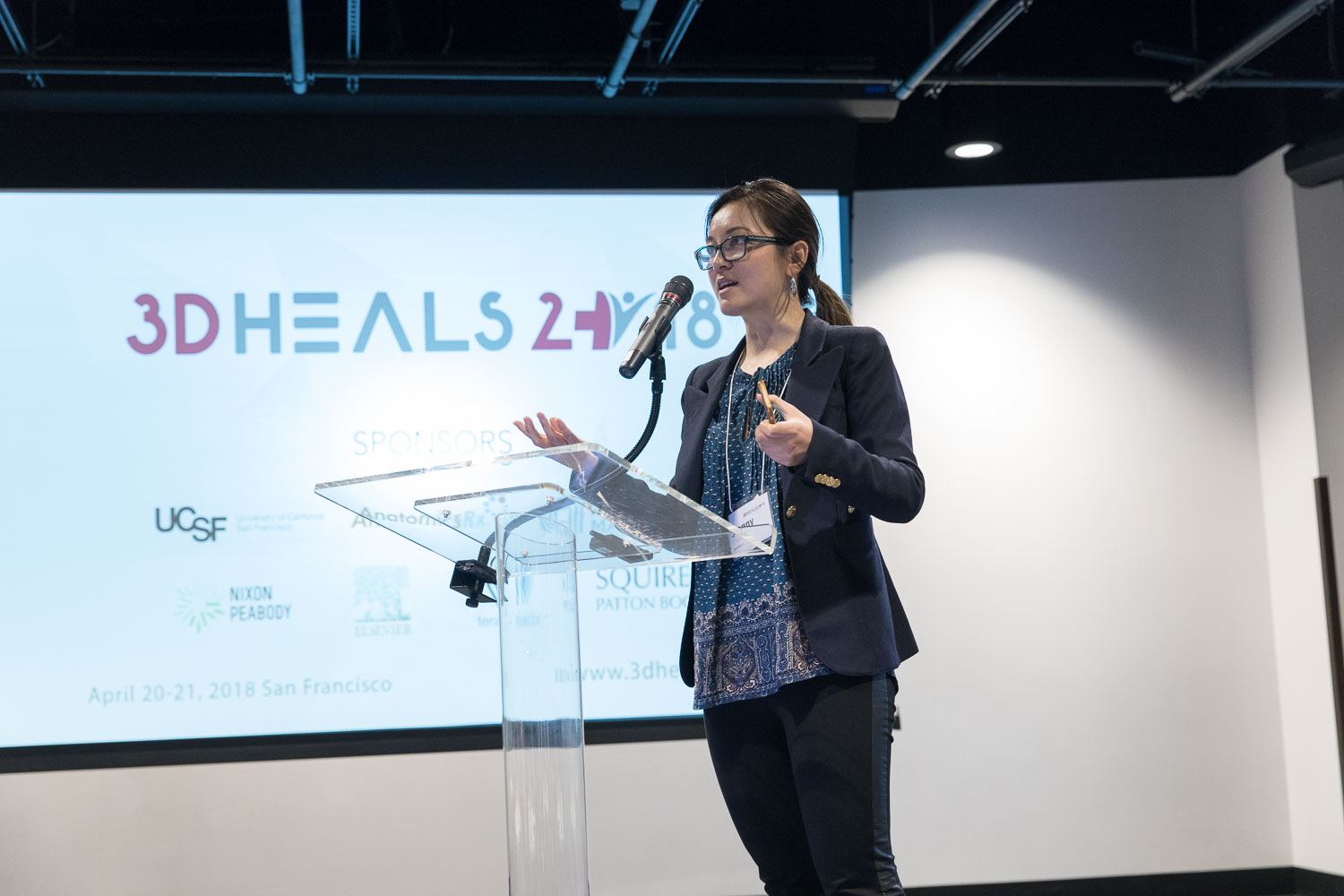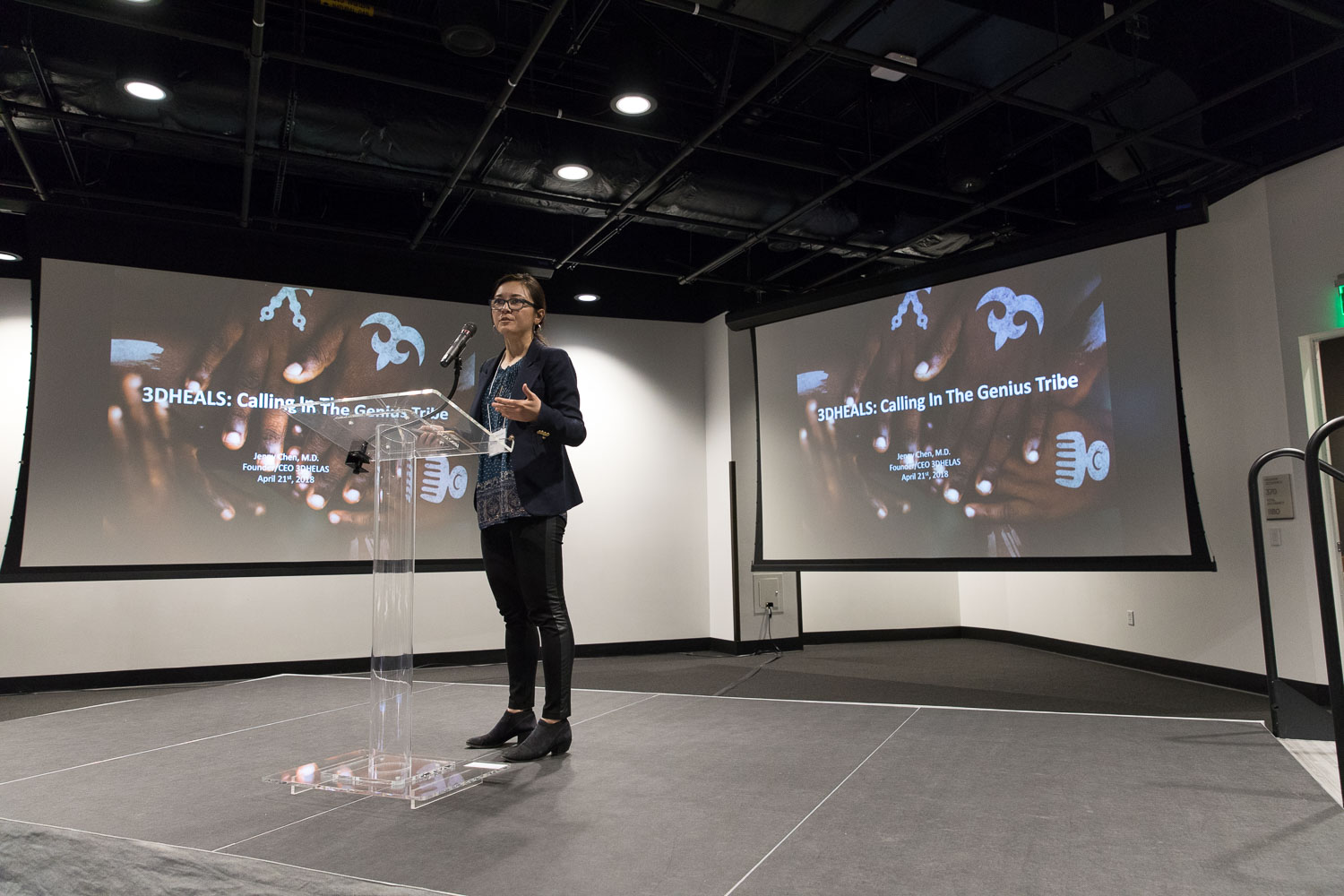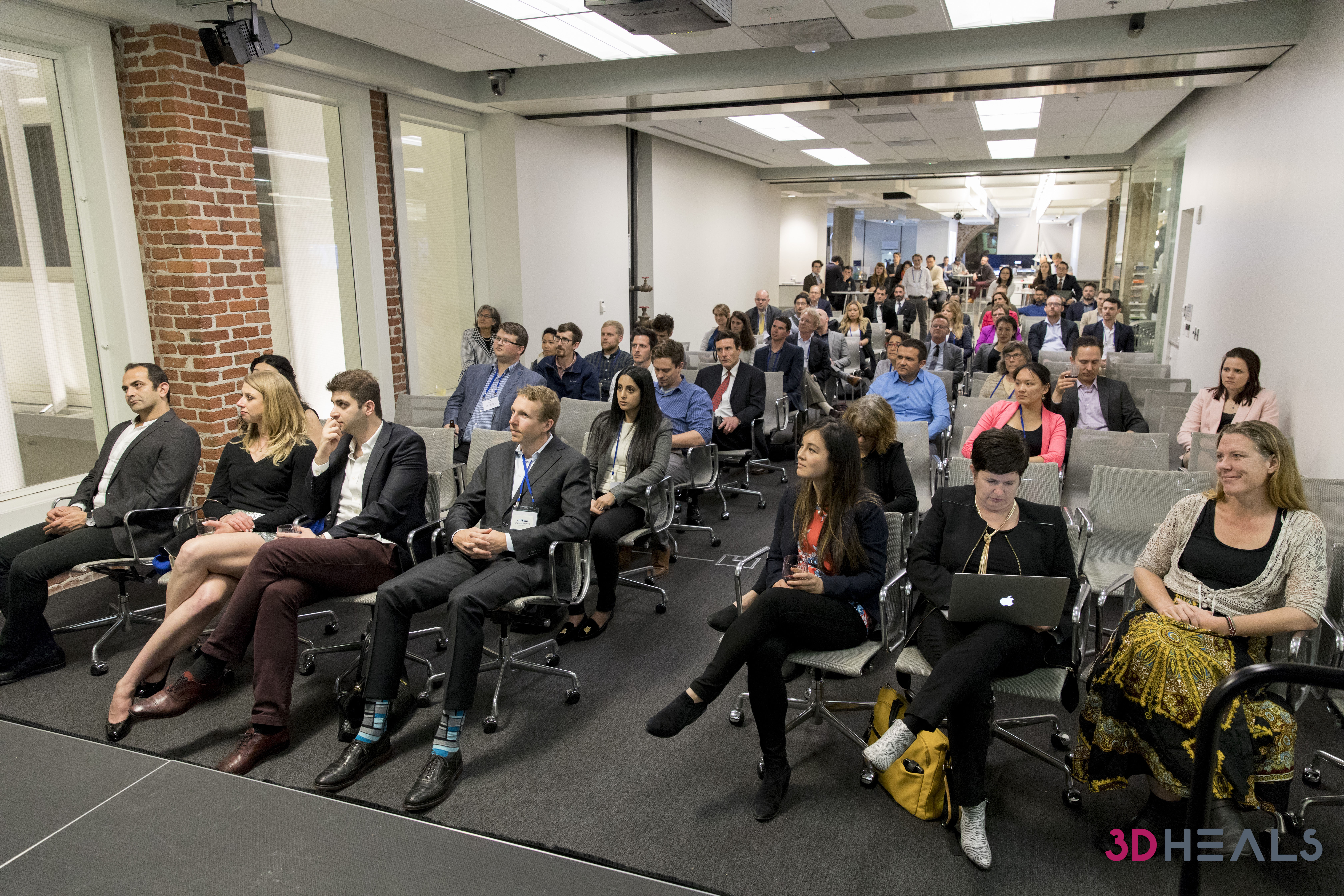A few years ago I started to notice a stream of interesting information coming from radiologist Jenny Chen. She was taking it upon herself to organize medical professionals the world over. She wanted to get Doctors and researchers in rooms together to learn, discuss and share information. 3DHEALS sprang from this enthusiasm. Now active the world over this organization brings together people in gatherings large and small. Professionals can now learn from each other directly and help innovate in bioprinting and 3D printing for healthcare. Isolated islands of information now can become shared torrents of understanding and knowledge. I really believe that 3DHEALS will do a lot to accelerate 3D printing in medicine. A lot of people are enthusiastic now but do not know where to start and where to learn. For bioprinting, 3DHEALS has become that central global hub. We interviewed Jenny Chen to find out more about 3DHEALS.

Who are the 3DHEALS members, and why did you start it?
As a radiologist, 3D printing blurs the line between the digital imaging world and the physical world. Three years ago, I wanted to make my models to help the surgeons I work with, but there was no clear pathway. In addition to cost, the software and hardware were both challenging to use. There was no instruction. That’s why I started 3DHEALS to meet people who could help me with achieving my own goal of making a model. Initially, this was a small meetup group in San Francisco, but very soon, the group attracted talented professions from many different disciplines: engineering, healthcare providers, entrepreneurs, investors, students/residents, scientists, and more. Everyone brings in unique expertise and perspectives, and our meetings soon become more organized educational events, first in San Francisco, then all over the world.
So, in short, 3DHEALS intends to break down barriers between people and welcome everyone interested in using 3D printing technology in healthcare to join the conversation.
What is its purpose?
3DHEALS’ goals are:
To connect innovators and early adopters on a single platform in healthcare 3D printing, bioprinting, and related technologies.
To educate communities worldwide in a single language that everyone understands.To discover startups/innovators in every corner of the world and give them a stage to be visible.
What is holding back 3D printing in hospitals?
We have published multiple blogs from various experts all over the world in our “Expert Corner” section focusing on this particular topic, and these experts are in the trenches every day trying to tackle this very question. However, to sum up, these opinions are 1) Lack of knowledge. Hospitals that are at the forefront of using 3D printing often have in-house advocates. These are often surgeons or radiologists who first had the first-hand experience elsewhere. Their strong voices and persistence will bring administrative attention to this new area of development. 2) The large gap between “costs” and “benefits.” Costs include the cost of hardware and materials, staffing, opportunity cost (space + time), potential liability risk, etc. Benefits include improved workflow (i.e., decreased turn-around time), clinical outcome improvement, the pathway to more reimbursement, etc. This gap remains at a level unpalatable to many hospitals that don’t have enough R&D budget like the Mayo Clinic, for example. 3DHEALS had explored the financial aspect of implementing 3D printing for pre-surgical planning in-depth in one of our earlier publication (A Roadmap from Idea to Implementation: 3D Printing for Pre-Surgical Application: Operational Management for 3D Printing in Surgery), which still applies today.
What is holding back 3D printing in medicine?
Not enough education, not enough expert network, not enough innovation/startups is holding back 3D printing in medicine.
It is not just a problem of healthcare; it is a problem of an entire ecosystem. This ecosystem should include many different members, ranging from engineering schools having an additive manufacturing curriculum for biomedical students to 3D printing companies that can look beyond currently a limited number of healthcare products (e.g., braces, aligners, etc.), all requiring nonconformists.

Are you a big believer in personalized medicine?
If I am picking words here, I would argue that medicine has always “intended” to be personalized, and not a single patient I know wanted to be treated as an “average.” That’s human, we value individualism, and we have an ego. However, in reality, we know medicine often treats us as a part of an algorithm.
If I have to forecast, I think “decentralized medicine” AND “personalized medicine” will be the way our future healthcare will look like. 3D printing can enable both of these goals. I have written a few blogs recently talking about this vision of decentralized healthcare, where the hospitals will play a diminishing role as care provider, if not significantly different position.
What do you think of bioprinting?
Bioprinting is a fascinating field to me because it not only includes all the fantastic capabilities of 3D printing, but also combines stem cell technologies, material sciences, and biological sciences. I believe these elements will play a significant role in future medical innovations, whether or not bioprinting “survives.”
The subject became a hot topic because of its potential role in organ regeneration, but I would argue that if people want to solve that problem, then they should focus on that problem, regardless of the solution, bioprinting or not. They should open up their options to include any regenerative techniques available and not limited to just bioprinting.
On the other hand, from a different angle, if a bioprinting company wants to thrive for the long run, then it should think about what products it can produce are the most scalable and profitable with its technologies.

What are the best resources for doctors/hospitals to learn on implementing 3D printing?
I would recommend they check out 3DHEALS website. There are several main things they can take advantage of:
Read the “Expert Corner” blogs: Many of them address the issues they will encounter at any stage of the implementation.
Check out the “Influencer Interviews” section of the website: This is where they can figure out who is doing what so that they can directly connect with individuals that can be their mentors or collaborators directly.Attend 3DHEALS events. We have had 70+ events all over the world, aiming to build local communities and connecting global hub without the high cost of attending conferences. That said, we are working on 3DHEALS2020, so stay tuned.
In terms of non-3DHEALS events/resources, I recommend SME and RSNA-SIG, both have dedicated individuals focusing on accelerating the adoption of 3D printing into healthcare, from different organizational angles.
I’ve always wondered why there isn’t more “non-critical” 3D printing going on, e.g., post-operative braces?
There are a lot of these activities. However, in the past, similar to a lack of adoption in hospitals, the same economic barriers apply. The gap between “costs” and “benefits” remains wide enough to not allow any such business into the profitable zone. Without profit, this type of practice will remain in the “nonprofit” world, which unfortunately often does not provide consistent products due to lack of funding, staffing, and other concurrent socioeconomic challenges unrelated to the technology (e.g., lack of electricity, transportation, etc.). That said, I do believe this gap is narrowing, and I have seen several startups in recent years that are showing promise to survive, both in the for-profit and nonprofit sectors (e.g., Mecuris, Xkelet, Victoria Hand Project, Protesis, etc.). So, there is light at the end of the tunnel.

Does someone need to develop the perfect 3D printer for hospitals?
I would expand “hospital” to “healthcare” because the hospital is only one type of potential buyer of 3D printing technology. Since based on my theory that hospital will eventually play a diminishing role in our healthcare, I would urge innovators to focus on the result of improving a specific aspect of healthcare, for example, on-demand personalized 3D printed splints, implants, surgical tools, etc., then focusing on a specific buyer. There are so many new players in healthcare these days, and it may very well be Amazon or Apple that will be the “buyer,” rather than a hospital.

What happens at a 3DHEALS event?
The format of having people from different backgrounds to have direct conversations with one another is inspiring to attendees and well received. At 3DHEALS events, ideas can become a reality, blueprints can be an actual product. Together, people share the vision that 3D Printing will be one of the major forces that will revolutionize healthcare in the next 10-20 years.
In the past two years, with the help of 30+ dedicated community managers, 3DHEALS has grown from a single city to now over 20+ cities all over the world and growing. Therefore, there is a definite interest in the subject, and the format is working. Today, we are actively building 3DHEALS both offline and online, and wish geography will no longer pose as a barrier for members in this group to connect, innovate, and succeed together.
Our mission will remain to: educate, connect, and discover in healthcare 3D printing and bioprinting space.
Subscribe to Our Email Newsletter
Stay up-to-date on all the latest news from the 3D printing industry and receive information and offers from third party vendors.
You May Also Like
3D Printing News Unpeeled: A $3000 SLS System, Construction Subsidies and Parameters
The Housing Affordability Crisis is one of Canadian President Trudeau’s biggest issues. Now the government has made subsidies available, including scaling new technologies, 3D printed housing and libraries of reapproved...
“Bundled Light” Enables High Quality Plastic 3D Printing from LEAM
Naturally, we expect current 3D printing methods to continuously improve, but it continues to do so in the most surprising ways. The latest development comes from LEAM, a startup spun...
Each to Their Own: Exploring Creality’s Latest Ender Trio as the Company Strengthens Its Commitment to 3D Printing Advocacy
Creality has reaffirmed its commitment to promoting 3D printing. The launch of the Ender-3 V3 SE, Ender-3 V3 KE, and Ender-3 V3 showcases the company’s dedication to catering to diverse...
3D Printing News Briefs, March 23, 2024: AM in the US Coast Guard, Navy, & More
In today’s 3D Printing News Briefs, we’re discussing the use of 3D printing in various branches of the military, including the U.S. Coast Guard, the U.S. Navy, and the German...































